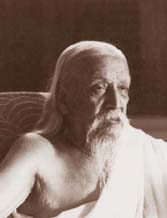
In many spiritual disciplines, and especially in several Indian spiritual disciplines, great importance is given to Japa, the repetition of a Mantra, a name of God or a phrase. In fact there are yogas where ‘namajapa’ is the most important part of sadhana. But, often this is done mechanically, with the emphasis solely on the number of times the Japa is done. For those who have chosen to follow the spiritual path, the question often arises:
Question : What is the meaning and importance of Japa? What is its value and how should one do it?
Sri Aurobindo and the Mother have written about Japa and Mantra at several places. Here are a few simple excerpts from Sri Aurobindo’s letters to disciples on this important topic:
“The japa is usually successful only on one of two conditions – if it is repeated with a sense of its significance, a dwelling of something in the mind on the nature, power, beauty, attraction of the Godhead it signifies and is to bring into the consciousness, – that is the mental way; or if it comes up from the heart or rings in it with a certain sense or feeling of bhakti making it alive, – that is the emotional way. Either the mind or the vital has to give it support or sustenance. But if it makes the mind dry and the vital restless, it must be missing that support and sustenance. There is, of course, a third way, the reliance on the power of the mantra or name in itself; but then one has to go on till that power has sufficiently impressed its vibration on the inner being to make it at a given moment suddenly open to the Presence or the Touch. But if there is a struggling or insistence for the result, then this effect which needs a quiet receptivity in the mind is impeded. That is why I insisted so much on mental quietude and not on too much straining or effort, to give time to allow the psychic and the mind to develop the necessary condition of receptivity – a receptivity as natural as when one receives an inspiration for poetry and music. It is also why I do not want you to discontinue your poetry – it helps and does not hinder the preparation, because it is a means of developing the right position of receptivity and bringing out the bhakti which is there in the inner being. To spend all the energy in japa or meditation is a strain which even those who are accustomed to successful meditation find it difficult to maintain – unless in periods when there is an uninterrupted flow of experiences from above.
*
OM is the mantra, the expressive sound-symbol of the Brahman Consciousness in its four domains from the Turiya to the external or material plane. The function of a mantra is to create vibrations in the inner consciousness that will prepare it for the realisation of what the mantra symbolises and is supposed indeed to carry within itself. The mantra OM should therefore lead towards the opening of the consciousness to the sight and feeling of the One Consciousness in all material things, in the inner being and in the supraphysical worlds, in the causal plane above now superconscient to us and, finally, the supreme liberated transcendence above all cosmic existence. The last is usually the main preoccupation with those who use the mantra.
In this yoga there is no fixed mantra, no stress is laid on mantras, although sadhaks can use one if they find it helpful or so long as they find it helpful. The stress is rather on an aspiration in the consciousness and a concentration of the mind, heart, will, all the being. If a mantra is found helpful for that, one uses it. OM if rightly used (not mechanically) might very well help the opening upwards and outwards (cosmic consciousness) as well as the descent.”
Sri Aurobindo





